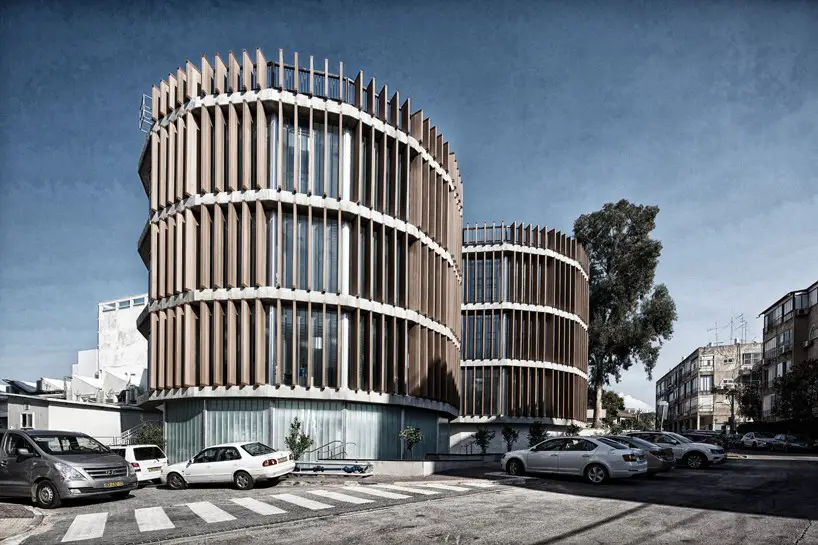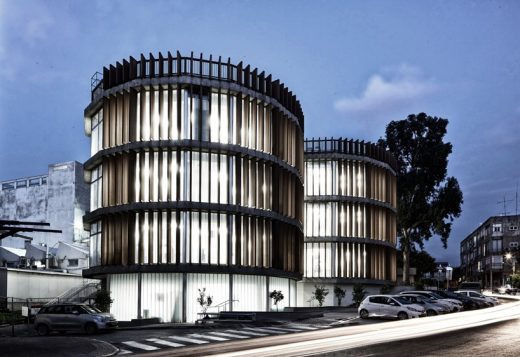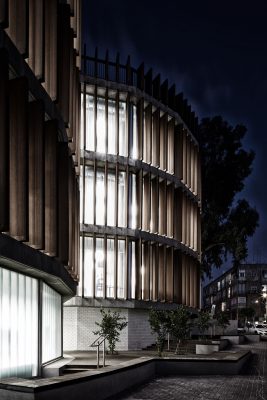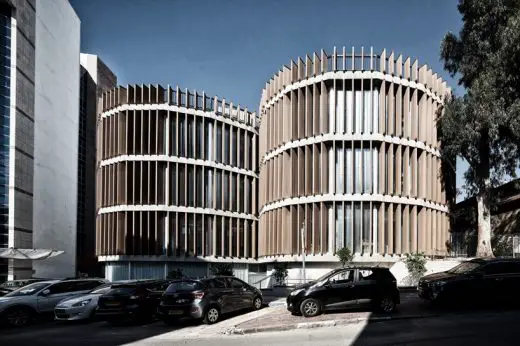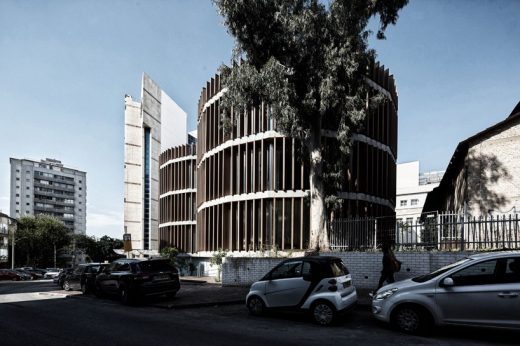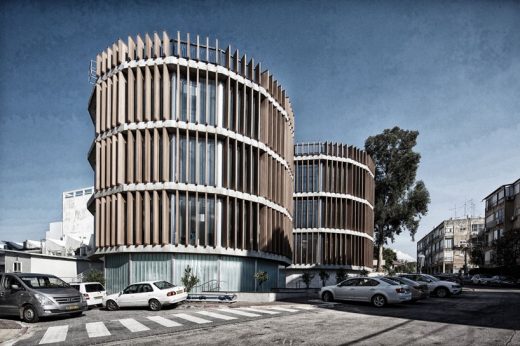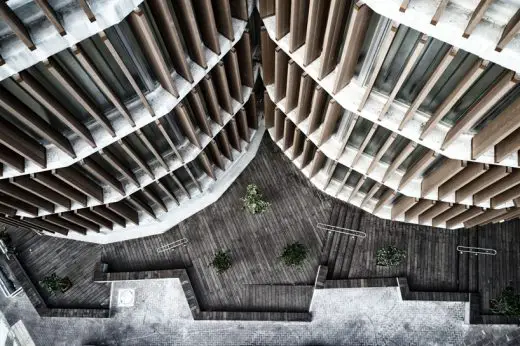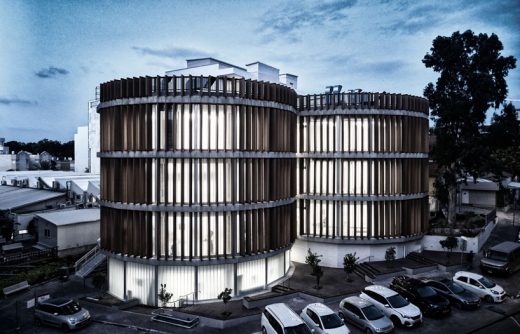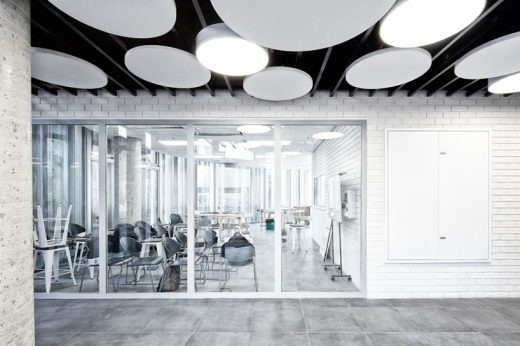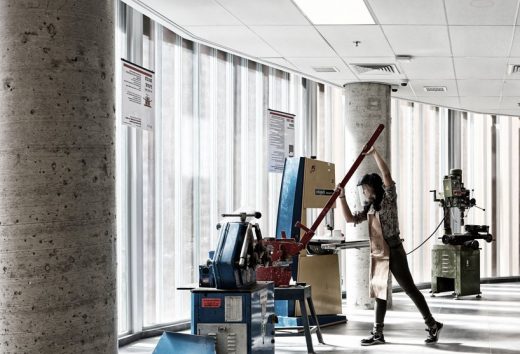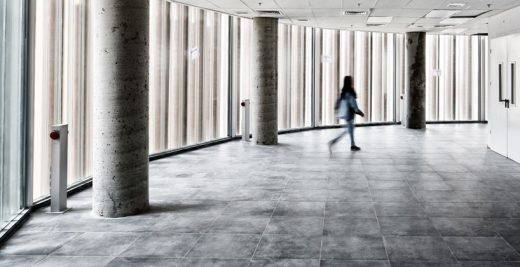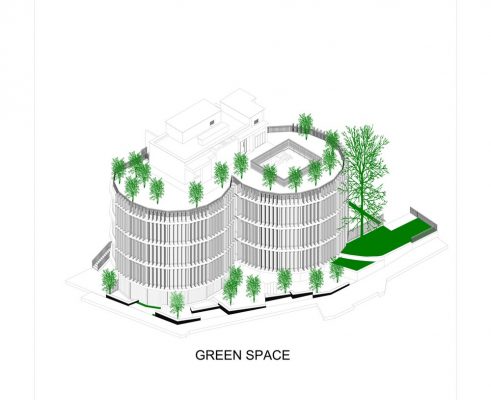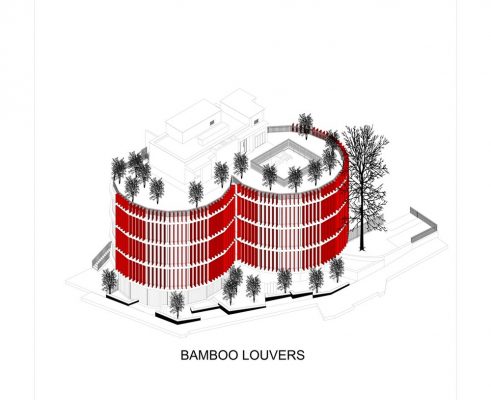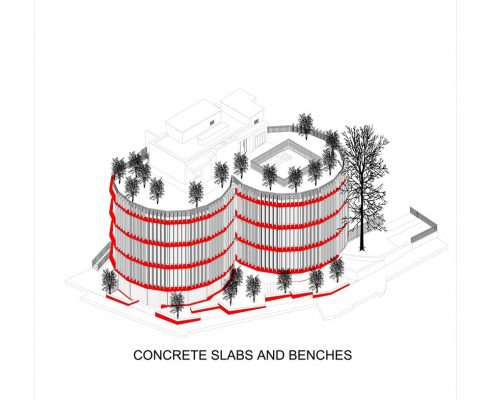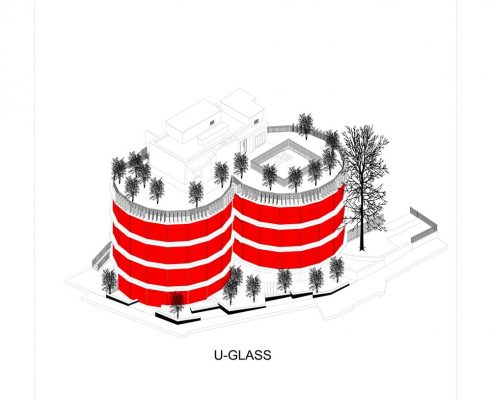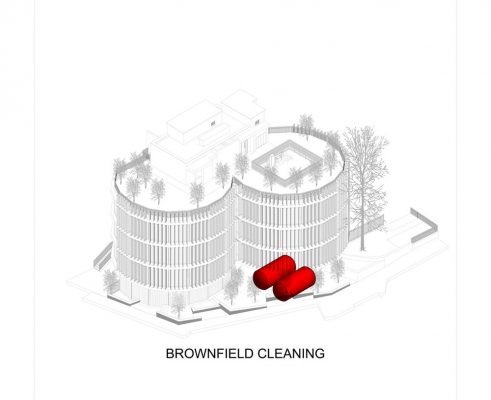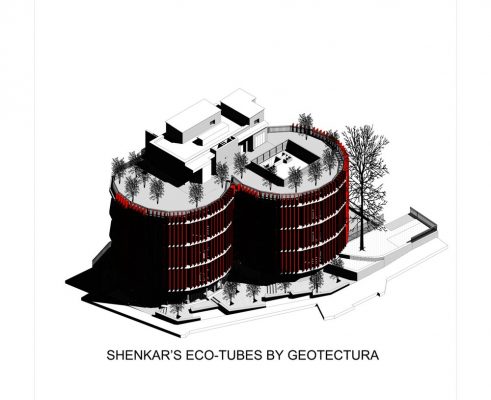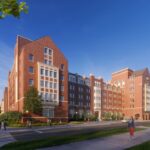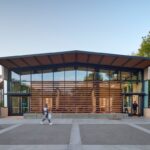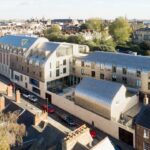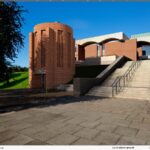Azrieli Faculty of Design Workshops Building, Sustainable Architecture Israel, Shenkar
Azrieli Faculty of Design Workshops, Shenkar
New Building for Shenkar College in Ramat Gan design by Geotectura Studio Architects, Israel
27 Nov 2018
Eco-Tubes – Azrieli Faculty of Design’s Workshops Building
Location: Ramat Gan, Tel Aviv District, Israel
Design: Geotectura Studio
ECO-TUBES – Azrieli Faculty of Design Workshops Building
Photos by Lior Avitan
Description:
The Azrieli Faculty of Design’s Workshops building (ECO-TUBES) contains several workshops (wood, metal, foam, paint and more), classrooms, offices and galleries, as well as the Gottesman Department of Jewelry Design. The building is part of the planned renovation of Shenkar’s campus by Geotectura.
Background –
Over the years, there have been several master plans and competitions that attempted to do this. Most of them called for demolishing the existing campus. However, the winning proposal was chosen, in part, because it offers a moderate solution based on stages and the ability to build upon what already exists; the plan fits the partial budget currently available and does not require an interruption of studies at the college.
The first stage, implemented in 2015, was to find a new and orderly home for the portable buildings. In the initial stage, Geotectura proposed creating the Glass Gallery in the old Plastics building and making the eastern wing in the building serviceable again by replacing its asbestos roof with an ecological one. This cleared the bottleneck and made the area west of the Plastics building available for constructing Stage 2 of the Workshops building.
The second stage, now completed, enables Shenkar College of Engineering, Design and Art to evacuate the workshops that are dispersed around the campus and bring them all under one roof in a central building designed to accommodate all the departments. The building also allowed the Department of Jewelry Design, which was in a rented site off campus, to again be an integral part of the college. The option to build additional floors will enable further growth and a concentration of efforts within the campus.
Landscape –
The old high wall facing the street was replaced by a bamboo deck and citrus trees for the benefit of the neighbors and the students, serving as a reminder of the citrus orchards that used to cover this site.
The deck is a continuation of the street’s sidewalk and creates depth for walking and rest on a street that previously appeared narrow and uninviting. The street now continues into the campus. This opens the gates of the college, especially at end-of-year events, and turns the area into one big pedestrian mall that blurs the distinction between the city and the campus.
Citrus trees of various types (orange, pomelo, lime, pomelit and grapefruit) attempt to restore a foggy historical memory to a crowded city that was completely covered with citrus groves less than a century ago. The combination of enlarging the street and planting the trees gives the city a quality of bygone days by creating an urban orchard.
A small orchard is also planned for the roof, using containers that can be moved from floor to floor as the building grows. All this, together with the bamboo cladding, combats the phenomenon of “urban heat islands” and creates a pleasant microclimate around the building and the street.
The old eucalyptus tree was protected during the construction, and dozens of new trees are being planted on a treeless site built on toxic land (and throughout the city).
Brownfield –
During excavation work, it was discovered that the site contains toxic soil. This created the need to remove old fuel tanks from the ground (which were apparently buried there for decades). The tanks were taken for disposal at the designated site. The treatment of the toxic soil was conducted according to the directives of the Ministry of Environmental Protection. This included taking soil samples from each site, excavation and removal of the polluted soil and the tanks and burying them at the designated site. The soil was renewed with unpolluted soil after the evacuation.
Shape, Light and Energy –
The conception of a compact shape led to minimal use of material, while maximizing natural light until late afternoon. The building’s unique shape is based on polygonal segments with ecological glass and excellent insulation along the sides. The polygons extend the length of the southern façade, making it possible to place more workshop tools that require optimal natural light. The arched design creates optimization of maximal workstations receiving natural soft lighting.
The building was designed to be energy-efficient. The combination of optimal wall insulation, special glass, appropriate geometry and shading elements allows the building to function at a very high level and save considerable energy relative to conventional construction.
As part of the project’s focus on energy efficiency, it was decided to create an energy center to be shared by several new and old buildings on campus. The old water-cooling units and air condensation units on the adjacent Building, which served that building, were replaced by new and larger units that are more energy efficient, especially during the transition seasons when the college is operating.
There is flexibility for future expansion to additional floors or new buildings. The chiller is a two-stage screw compressor with discharge capacity of up to 12.5% of the nominal capacity, which saves energy and enables the maintenance of more precise temperatures in the building.
The air conditioning system of the building itself and the air filtration system were designed to recycle air in the ventilation systems of the workshops to save energy. The velocity of the air blowers is modulated to deliver the desired amount of air and save energy. The air filtration system removes the particles emitted from the various machines.
The shape of the building traces the sun’s path and enables natural lighting suitable for the workshops in all hours of their daily operations. Louvers provide shade for the glass curtain walls and block direct sunlight, and further soften the intensity of the natural lighting. During the summer months, the glass does not receive direct sunlight, while the sun enters in an ideal way during the winter months.
The shell of glass walls that lets in the natural light is called U-Glass. It consists of U-shaped, double-glazed panels that hold 7 centimeters of air between the thick panels of glass. The glass is translucent to prevent distractions that could compromise safety, without harming the quality of the natural light that enters. Consequently, all the rooms in the building have workspaces with maximal natural and soft lighting, which provides ideal working conditions for the students in the workshops.
Vertical louvers (a combination of bamboo fiber and recycled plastic) protect the glazed polygonal façades from direct exposure to the sun most of the time and boost efficiency by nearly 20%. This compares to the straight southern facades that receive a merciless Israeli sun.
Unless conventional construction in Israel, the shape of the Workshops building, together with the louvers and the insulating glass, prevents heat buildup within the building; this lightens the burden on the air conditioning system and boosts energy savings. The louvers are placed from east to west, and do not allow the sun’s rays to warm the building’s façades throughout the day. On the northern side, there is no need for louvers and there is a view of the nearby Park.
Materials –
The building features a mix of numerous green and rough materials (recycled and local materials, non-toxic glues, etc.). Local concrete (without fly ash) in the peripheral beams and columns, together with concrete micro topping on the street benches, complements the ecological glass and shades made of recycled and renewed materials. Silicate bricks locally produced match the look of the adjacent building that was built entirely from silicate nearly a century ago and is designed for preservation.
Bamboo is used in the louvers and in the deck on the various levels and on the roof. Bamboo is a material (a grass, not a tree) that quickly renews itself. The material for the Louvers is a combination of bamboo and recycled materials that have high resistance to UV radiation. It does not require maintenance and has a natural look.
BIM (Building Information Modeling) –
The planners used BIM 3D design methodology and the considerable information that has been accumulated in the model. This facilitated synchronization between all the complex systems within the building, simulations based on geometry and environmental conditions, and optimization in accordance with energy goals and functional objectives.
The construction was conducted in 3D from the outset, including examination of various alternatives. Together with simulations, this helped us to achieve a particularly efficient result in terms of the building’s energy balance.
Eco-Tubes Azrieli Faculty of Design’s Workshops – Building Information
Project name: ECO-TUBES
Architect’s Firm: Geotectura Studio
Website: http://www.geotectura.com
Contact e-mail: [email protected]
Project location: Israel, Ramat Gan
Completion Year: 2018
Gross Built Area (square meters): 2200 m2 (phase 1) – 4400 m2 (phase 2)
Lead Architects: Joseph Cory (Geotectura Studio)
Client: Shenkar College
Structural Engineers: Peer Moshe Civil Engineering
MEP Engineers: Avner Vishkin
Superposition: Eyal Niv Engineering
Landscape: Yael Bar Maor
Electricity: Ariel Malka
Plumbing: Ravid Engineering
Project Manager: C2
Contractor: Liam Engineering
Photo credits: Lior Avitan – http://lioravitan.com/
Sustainable Products:
1. Ackerstein / Silicate Stones
www.ackerstein.co.il/eng/homepage
2. Indan / Bamboo-Recycled Plastic Composite Material
www.indan-ltd.com
3. Kne-Kash / Bamboo Deck
kane-kash.com
4. Orbond / Recycled Gypsum and Earthwool
www.orbond.co.il/
5. Winex / U-Glass
www.winex.co.il
Eco-Tubes Azrieli Faculty of Design’s Workshops Building images / information from Geotectura Studio Architects Israel
Location: Azrieli Faculty of Design, Ramat Gan, Israel, Middle East
Israel Architecture Designs
Contemporary Israel Architectural Selection
Tel Aviv Architectural Tours by e-architect
Cloud Seeding Plaza Pavilion Holon, south of Tel Aviv
Design: MODU with Geotectura

photo : Aviad Bar Ness
Cloud Seeding Plaza Pavilion in Holon
Tel Aviv Buildings
Tel Aviv Museum of Art
Design: Preston Scott Cohen
Tel Aviv Museum of Art
Rothschild Tower
Design: Richard Meier & Partners Architects
Rothschild Tower Tel Aviv
Design Museum Holon
Design: Ron Arad
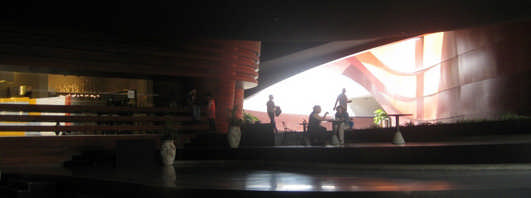
image courtesy designer
Design Museum Holon
Israeli Education Architecture
Haifa Court House Building
Design: Chyutin Architects
Haifa Court Building
BGU University Entrance Square & Art Gallery, southern Israel
Design: Chyutin Architects
BGU University Art Gallery
Comments / photos for the Eco-Tubes Azrieli Faculty of Design’s Workshops Building page welcome
Website: Ramat Gan, Tel Aviv District

